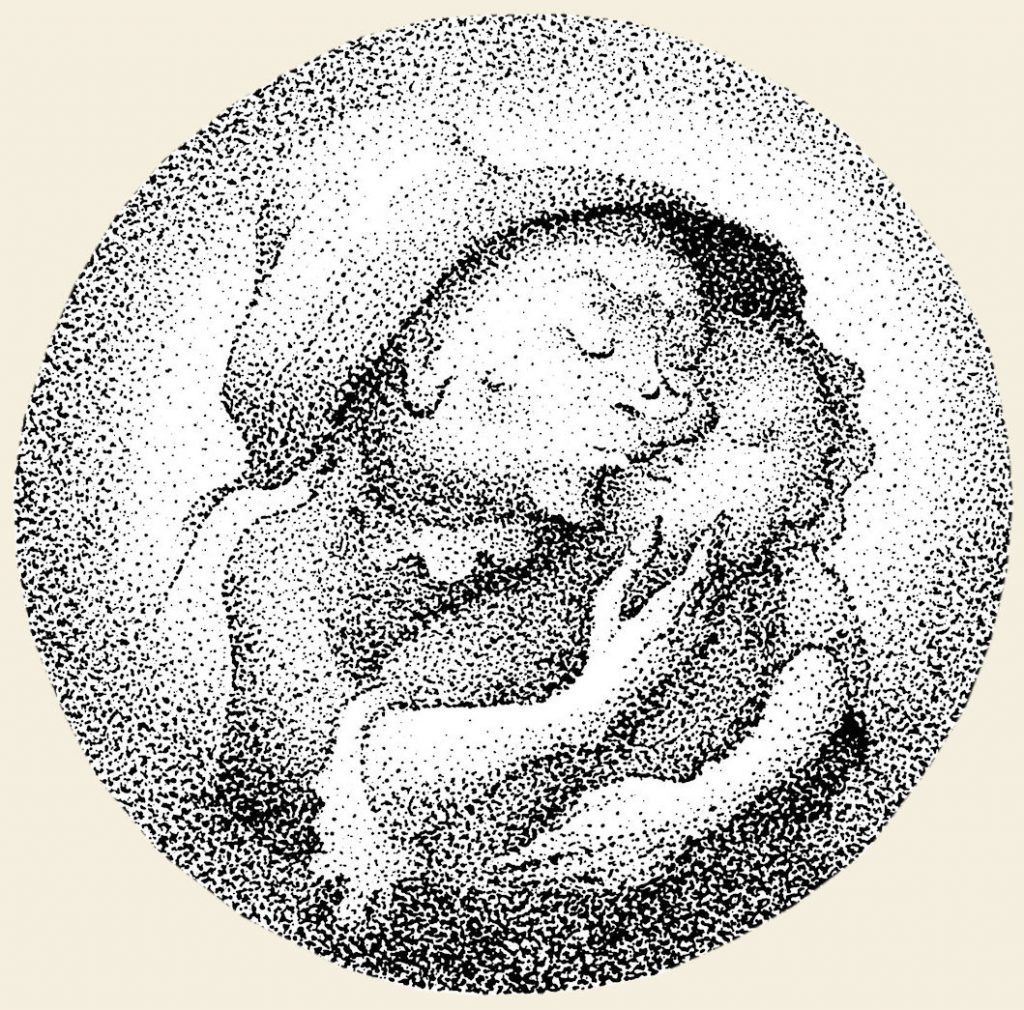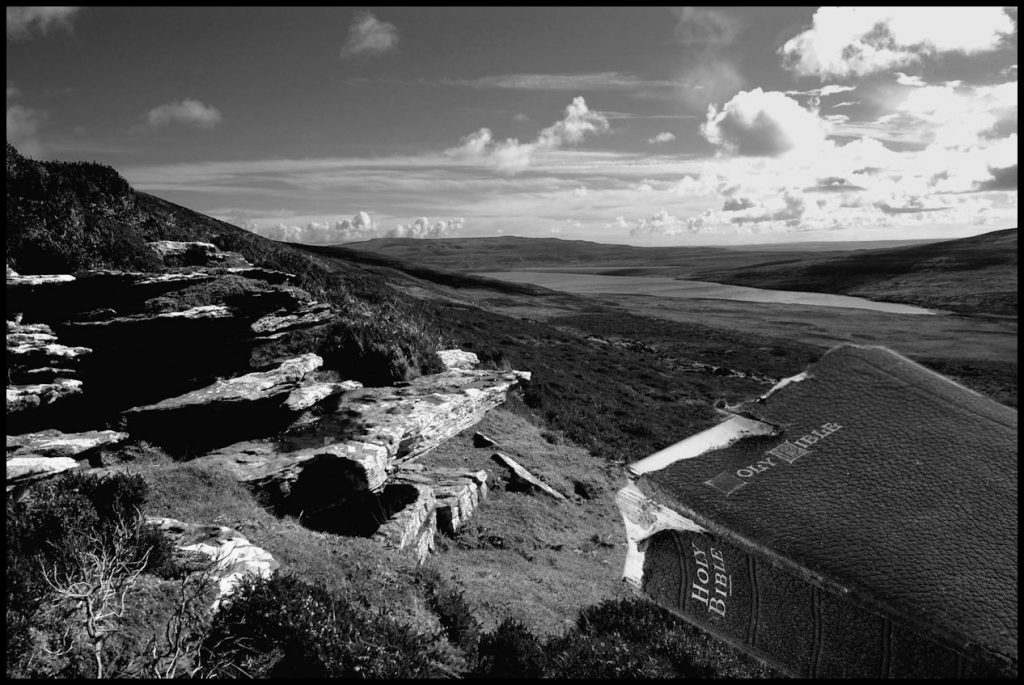There was once a woman in Rousay who had a baby. It was a bonnie healthy bairn, and was the apple of the proud parents’ eyes. But then it began to change. It grew weak and started to waste away and pine. The mother was very worried, and called for help from a wise woman who lived in the district.
The wise woman came to see the bairn and took a good long look at it. The mother pressed her to find out what ailed the bairn; she was at her wits’ end with worry. The wise woman said that her bairn had been taken by the fairies and they had left one of their own in its place as a changeling. She told the mother that if she wanted to have her child restored to her she must go to a rock face called the Hammers of the Sinians. It was up the hill past Muckle Water. She must take with her a wedge of steel and a Bible. There she would find a cleft in the rock at a certain place, and she had to drive the steel wedge into the crack. The rock would then open and she would see a woman sitting with her bairn on her knee. She must not say a word, but strike the fairy woman three times on the face with the Bible. She must then turn around, without uttering a sound, and return home.
The mother took steel and a Bible and headed up the hill to the rock face. She found the cleft in the rock as she had been told by the wise woman, and drove in the steel wedge. The rock opened and there was the fairy woman, sitting with the bairn on her knee. The fairy woman tried everything she could to make the woman speak, but to no avail. The woman remembered what the wise woman had said, and held her tongue. She raised the Bible and struck the fairy three times on the face, then she left. She went home at a brisk speed, hope and fear burning in her breast. When she arrived at her house, there was her baby back before her, as fat and healthy as when it was taken.

My thanks to Tom Muir for allowing me to reproduce this from his book
The Mermaid Bride and other Orkney Folk Tales. – the original being
in Duncan J Robertson’s ‘Orkney Folk-Lore’, published in Vol I
Proceedings of the Orkney Antiquarian Society, 1922-23, 38.
The illustration, used in Tom’s book, is courtesy of Bryce Wilson
